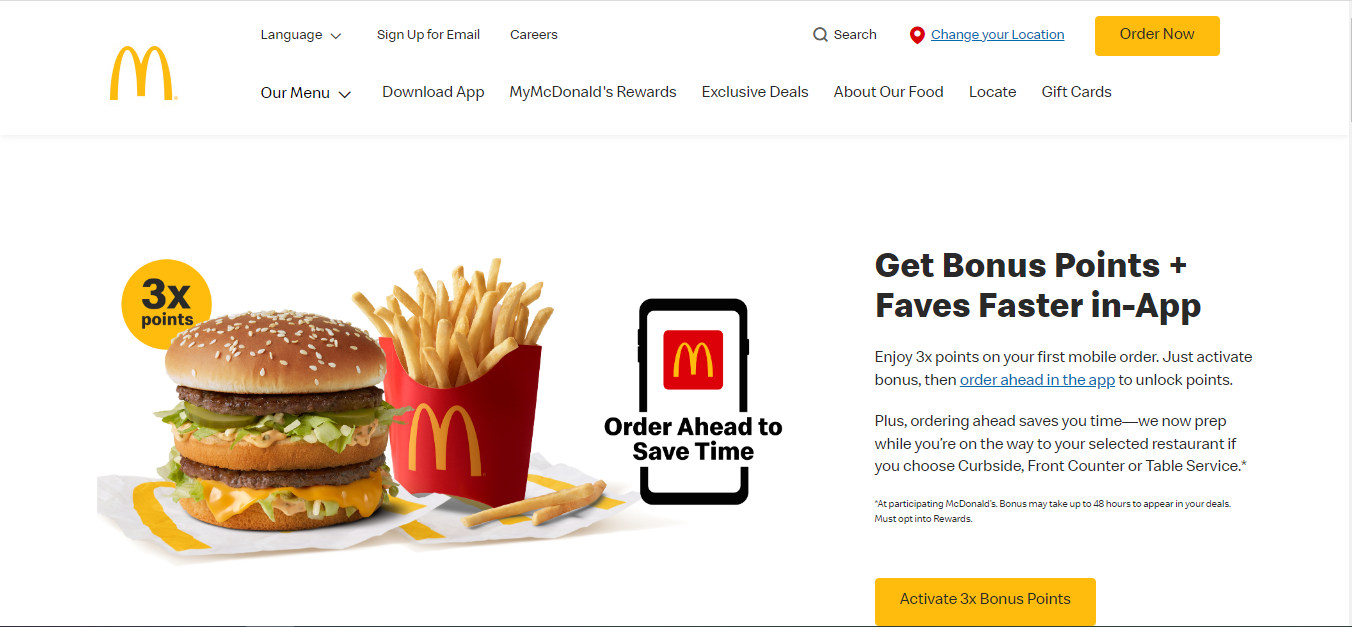Understanding Behavioral Marketing
Segmentation in Behavioral Marketing campaigns
Behavioral Marketing strategies play a huge role in today’s digital age, traditional marketing approaches are being revolutionized by the emergence of behavioral marketing.
By analyzing consumer behavior patterns and preferences, businesses can gain valuable insights into their target audience and deliver personalized experiences that drive engagement, conversions, and brand loyalty.
In this article, we explore the concept of behavioral marketing, its key components, and how it can be harnessed to optimize marketing strategies.
Understanding Behavioral Marketing

Behavioral marketing goes beyond demographic data and focuses on capturing and analyzing consumer actions, choices, and habits.
It involves using this information to tailor marketing efforts and deliver personalized content and experiences that resonate with individual customers.
By understanding consumer behavior, marketers can make data-driven decisions to optimize their campaigns, increase conversions, and foster long-term customer relationships.
A Customer-Centric Approach

A customer-centric approach in behavioral marketing involves gaining a deep understanding of customer needs, desires, and motivations.
It requires businesses to listen to their customers, gather feedback, and conduct research to uncover insights into what drives consumer behavior.
By putting the customer at the center of marketing strategies, businesses can create experiences that resonate with their target audience and address their specific pain points.
Personalized Messaging and Content

One of the key aspects of a customer-centric approach is delivering personalized messaging and content.
Behavioral marketing allows businesses to segment their audience based on behavior, preferences, and interests.
By tailoring messages and content to specific customer segments, marketers can create more relevant and meaningful experiences.
Personalization helps establish a connection with customers, showing that the brand understands their unique needs and is committed to providing value.
Building Trust and Loyalty

A customer-centric approach fosters trust and loyalty among customers.
By analyzing customer behavior and preferences, businesses can deliver personalized experiences that demonstrate a deep understanding of their customers.
This level of personalization helps build trust, as customers feel valued and understood by the brand.
When customers trust a brand and feel that their needs are being met, they are more likely to remain loyal and engage in long-term relationships with the business.
Seamless Customer Journey

A customer-centric approach in behavioral marketing focuses on creating a seamless customer journey.
By mapping out the customer’s interactions and touchpoints with the brand, marketers can identify areas for improvement and optimize the customer experience.
This includes ensuring consistency across different channels and devices, reducing friction points, and providing relevant information and support at each stage of the customer journey.
A seamless customer journey enhances satisfaction and increases the likelihood of conversions.
Continuous Customer Engagement and Feedback

A customer-centric approach involves ongoing engagement and communication with customers.
Behavioral marketing enables businesses to track and analyze customer behavior in real-time.
This data can be used to deliver timely and relevant messages, offers, and recommendations.
Additionally, actively seeking and incorporating customer feedback into marketing strategies helps businesses stay attuned to evolving needs and preferences, enabling them to adapt and provide better experiences over time.
Segmentation in Behavioral Marketing campaigns
Segmentation is a critical component of behavioral marketing as it allows businesses to divide their target audience into distinct segments based on shared characteristics or behaviors.
Precision Targeting

By segmenting the audience, marketers can direct their resources towards specific groups that are more likely to be interested in their products or services.
This targeted approach improves the effectiveness of marketing efforts and reduces wastage of resources on irrelevant audiences.
Personalized Messaging

Segmenting the audience enables marketers to create tailored messages that resonate with each group’s unique needs, preferences, and interests.
Personalized messaging increases the relevance and impact of marketing campaigns, leading to higher engagement and conversions.
Improved Customer Experience

When customers receive content and offers that align with their interests and preferences, they feel understood and valued.
Segmentation allows businesses to enhance the customer experience by delivering relevant and meaningful interactions, fostering customer satisfaction and loyalty.
Demographic Segmentation

This involves dividing the audience based on demographic factors such as age, gender, income, occupation, and location.
Demographic segmentation provides a basic understanding of the target audience’s characteristics and helps in tailoring marketing messages accordingly.
Psychographic Segmentation

Psychographic segmentation focuses on the psychological and lifestyle attributes of the audience.
It considers factors like interests, values, attitudes, behaviors, and motivations.
This type of segmentation allows businesses to target specific personality traits or lifestyles that align with their products or services.
Behavioral Segmentation

Behavioral segmentation analyzes the actual behaviors and actions of customers.
It involves grouping individuals based on their purchasing behavior, brand interactions, engagement level, and usage patterns.
Behavioral segmentation allows for precise targeting and personalization based on how customers have previously interacted with the brand.
Geographical Segmentation

Geographical segmentation divides the audience based on their geographic location, such as country, region, or city.
This segmentation is useful when marketing strategies need to be tailored to specific geographical preferences, cultural nuances, or regional trends.
Data Collection

Gather relevant data about the target audience, including demographic information, behavior patterns, and engagement metrics.
This data can be collected through sources like website analytics, CRM systems, surveys, or social media interactions.
Analysis and Insights

Analyze the collected data to identify commonalities, patterns, and segments within the audience.
Utilize data analytics tools to gain actionable insights into customer behaviors, preferences, and motivations.
Segmentation is a powerful tool in behavioral marketing, enabling businesses to deliver targeted, personalized experiences to their audience.
By understanding and leveraging the unique characteristics and behaviors of different customer segments, businesses can optimize marketing efforts, improve customer satisfaction, and drive successful outcomes.
5 Tips for Retargeting

Retargeting is a powerful strategy in behavioral marketing that focuses on reconnecting with potential customers who have previously shown interest in a product or service.
By targeting these individuals with personalized messages and offers, businesses can increase brand recall, engagement, and conversions.
Here are key aspects to consider when implementing retargeting strategies:
1. Tracking User Behavior

Retargeting relies on tracking user behavior to identify individuals who have visited a website, viewed specific products, added items to their cart, or performed other desired actions.
This can be accomplished through the use of tracking pixels, cookies, or other tracking technologies.
By monitoring user behavior, businesses can create segmented lists of potential customers for retargeting campaigns.
2. Ad Customization and Personalization

Retargeting ads should be highly customized and personalized to maximize their impact.
By using the insights gathered from user behavior and segmentation, businesses can create ads that align with users’ interests and previous interactions.
Personalization could include displaying the specific products or services that users previously showed interest in, offering exclusive discounts or promotions, or highlighting relevant content based on their preferences.
3. Ad Frequency and Timing

Finding the right balance in ad frequency is crucial in retargeting.
While it’s important to remind potential customers about the brand or products, bombarding them with excessive ads can lead to ad fatigue or annoyance.
Setting frequency caps and establishing a smart ad delivery schedule can help optimize ad exposure and prevent overexposure.
Additionally, timing is crucial in retargeting. Displaying ads promptly after a user’s interaction increases the likelihood of conversion.
4. Cross-Channel Retargeting

Retargeting can extend beyond traditional display ads.
Businesses can leverage cross-channel retargeting to reconnect with potential customers across various platforms and touchpoints.
This includes utilizing social media platforms, email marketing, and dynamic content personalization to engage users on multiple channels.
By maintaining consistent messaging and reinforcing brand presence, cross-channel retargeting increases the chances of conversion.
5. Continuous Optimization and A/B Testing

Retargeting campaigns require ongoing optimization and testing to ensure effectiveness.
Businesses should closely monitor the performance of retargeting ads, analyzing metrics such as click-through rates, conversion rates, and return on ad spend.
By conducting A/B tests, businesses can experiment with different ad creatives, messaging variations, and targeting strategies to optimize campaign performance and drive better results.
Retargeting is a valuable tactic in behavioral marketing, allowing businesses to re-engage potential customers and increase conversions.
By customizing ads, segmenting audiences, and optimizing campaigns, businesses can effectively reconnect with individuals who have shown interest in their products or services, fostering brand recall and driving desired actions.
7 Ethical Considerations

Behavioral marketing offers powerful tools and techniques for businesses to understand and engage with their target audience.
However, it is crucial to approach behavioral marketing with strong ethical considerations to protect consumer privacy and build trust.
1. Transparency and Informed Consent

Transparency is essential in behavioral marketing.
Businesses should clearly communicate to consumers about the collection, storage, and use of their data for behavioral tracking and targeting purposes.
This includes providing easily accessible privacy policies, terms of service, and cookie consent mechanisms that explain the data collection practices in plain language.
Consumers should have a clear understanding of how their data is being used and the ability to provide informed consent.
2. Data Security and Protection

Safeguarding consumer data is of utmost importance.
Businesses must implement robust data security measures to protect the personal information collected during behavioral tracking.
This involves using encryption, secure data storage practices, and regularly updating security protocols to mitigate the risk of data breaches.
Businesses should also comply with relevant data protection regulations and industry standards to ensure the privacy and security of consumer data.
3. Opt-Out Mechanisms and User Control

Respecting user control over their data is a fundamental ethical consideration.
Businesses should provide clear and accessible opt-out mechanisms, enabling users to easily choose whether they want their behavior to be tracked or targeted.
This includes offering options to manage cookie preferences, control ad personalization, and unsubscribe from marketing communications.
Providing users with control over their data empowers them to make informed choices about their privacy.
4. Non-Discrimination and Fairness

Behavioral marketing should be conducted in a non-discriminatory and fair manner.
It is important to avoid targeting or excluding individuals based on sensitive attributes such as race, gender, religion, or sexual orientation.
Discriminatory practices in behavioral marketing not only raise ethical concerns but can also result in legal consequences and damage the brand’s reputation.
In short, businesses should ensure that their targeting strategies adhere to principles of fairness and equal treatment.
5. Limited Data Retention

Practicing responsible data retention is crucial in behavioral marketing.
Businesses should only retain consumer data for as long as necessary to fulfill the intended purpose.
Unnecessarily retaining data can increase the risk of unauthorized access and misuse.
Therefore, by implementing data retention policies that align with regulatory requirements and consumer expectations, businesses can demonstrate their commitment to privacy and ethical data handling practices.
6. Responsible Use of Behavioral Insights

While behavioral insights provide valuable information about consumers, their use must be responsible and ethical.
In other words, businesses should avoid manipulating or exploiting consumer vulnerabilities identified through behavioral tracking.
Instead, the focus should be on creating positive and meaningful experiences for consumers based on their preferences, rather than using their behavioral data solely for profit-driven purposes.
7. Accountability and Compliance

Businesses engaging in behavioral marketing should take accountability for their practices.
This includes monitoring and auditing their data handling processes, regularly reviewing privacy policies, and ensuring compliance with relevant laws and regulations.
Meanwhile, implementing internal controls and conducting third-party audits can help businesses maintain ethical standards and address any potential issues proactively.
By incorporating these ethical considerations into their behavioral marketing strategies, businesses can foster consumer trust, demonstrate respect for privacy, and build long-lasting relationships with their audience.
In short, striking the right balance between business goals and consumer privacy is vital to ensuring a sustainable and ethical approach to behavioral marketing.
2 Behavioral Marketing Examples
McDonald’s

McDonald’s, as a global fast-food chain, utilizes various behavioral marketing strategies to engage with its customers and enhance their dining experience.
Here are some examples of how McDonald’s applies behavioral marketing:
Mobile App Personalization
McDonald’s has a mobile app that allows customers to place orders, customize meals, and access exclusive offers.
The app collects data on customer preferences, such as favorite menu items, order history, and location.
With this information, McDonald’s can personalize promotions, recommend menu items, and send targeted offers to app users based on their behavior and preferences.
Location-Based Marketing
McDonald’s leverages location-based marketing to deliver targeted messages to customers.
Using geofencing technology, McDonald’s can send notifications or special offers to app users when they are near a McDonald’s restaurant.
This strategy encourages customers to visit a nearby location and take advantage of time-sensitive promotions.
Loyalty Programs
McDonald’s has implemented loyalty programs, such as the MyMcDonald’s Rewards, which incentivize customers to make repeat purchases.
In conclusion, by tracking customer behavior and spending patterns through these programs, McDonald’s can offer personalized rewards, discounts, and promotions tailored to individual preferences.
Nike

Nike, as a leading global sports and lifestyle brand, employs various behavioral marketing strategies to connect with its target audience and drive customer engagement.
Personalized Recommendations
Nike collects data on customer preferences, purchase history, and browsing behavior to provide personalized product recommendations.
By analyzing a customer’s interactions with the Nike website or app, including products viewed, added to cart, or purchased.
In addition, Nike can suggest relevant products and make personalized recommendations that align with the customer’s interests and activities.
Social Media Engagement
Nike actively engages with its audience on social media platforms, such as Instagram, Twitter, and Facebook.
Through social listening and monitoring, Nike identifies trends, consumer conversations, and user-generated content related to their brand.
This enables Nike to tailor their marketing efforts and create content that resonates with their target audience.
Nike+ Membership Program
In addition, Nike offers a membership program called Nike+, which allows customers to create personalized profiles and track their activities, workouts, and progress.
By analyzing the data collected from members, Nike can provide personalized training plans, exclusive offers, and product recommendations based on each member’s fitness goals and preferences.
Conclusion
Behavioral marketing represents a paradigm shift in how businesses connect with their customers.
By delving into consumer behavior and leveraging data analytics, marketers can unlock valuable insights that fuel targeted and personalized campaigns.
From segmentation and retargeting to dynamic content optimization, the possibilities are vast.
However, ethical considerations and privacy protection must remain at the forefront.
By adopting a customer-centric approach and leveraging the power of behavioral marketing, businesses can forge stronger connections, enhance customer experiences, and drive sustainable growth in the digital era.
If you liked this article, consider reading another about Brand Audit here.
FAQ
Behavioral marketing works by analyzing consumer behavior and using that information to tailor marketing efforts and deliver personalized experiences.
It involves collecting data on consumer actions, such as website visits, product views, purchases, and interactions with marketing materials.
This data is then analyzed to identify patterns, preferences, and interests.



